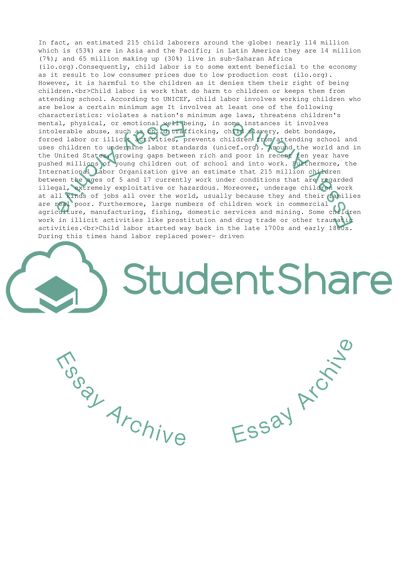Cite this document
(Child Labor in U.S around World Research Paper Example | Topics and Well Written Essays - 2250 words - 1, n.d.)
Child Labor in U.S around World Research Paper Example | Topics and Well Written Essays - 2250 words - 1. https://studentshare.org/macro-microeconomics/1799214-child-labor-in-us-around-world
Child Labor in U.S around World Research Paper Example | Topics and Well Written Essays - 2250 words - 1. https://studentshare.org/macro-microeconomics/1799214-child-labor-in-us-around-world
(Child Labor in U.S Around World Research Paper Example | Topics and Well Written Essays - 2250 Words - 1)
Child Labor in U.S Around World Research Paper Example | Topics and Well Written Essays - 2250 Words - 1. https://studentshare.org/macro-microeconomics/1799214-child-labor-in-us-around-world.
Child Labor in U.S Around World Research Paper Example | Topics and Well Written Essays - 2250 Words - 1. https://studentshare.org/macro-microeconomics/1799214-child-labor-in-us-around-world.
“Child Labor in U.S Around World Research Paper Example | Topics and Well Written Essays - 2250 Words - 1”. https://studentshare.org/macro-microeconomics/1799214-child-labor-in-us-around-world.


